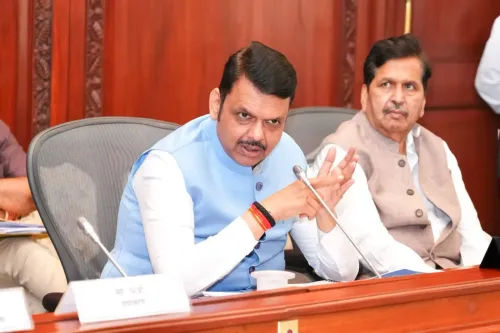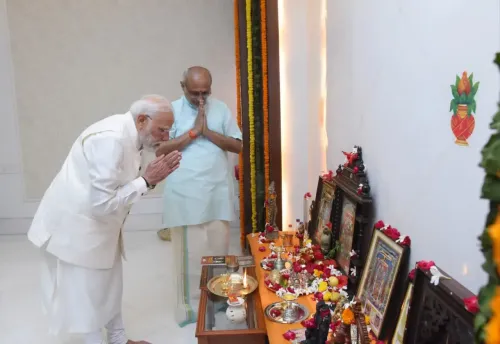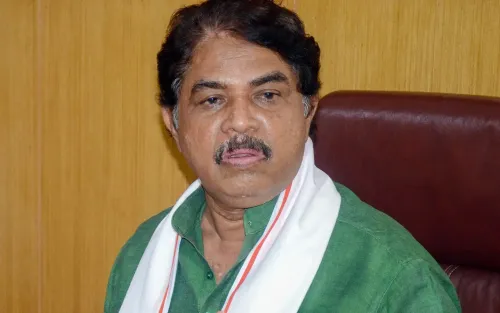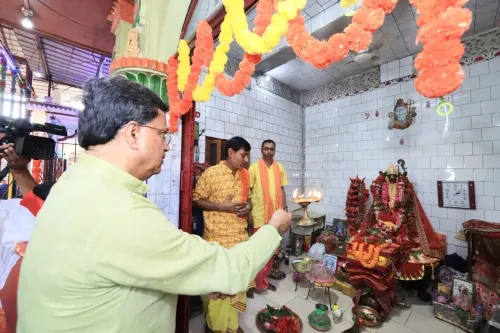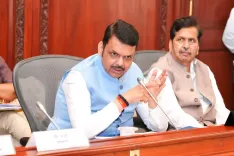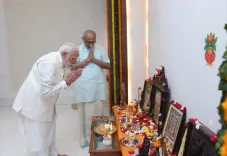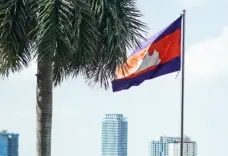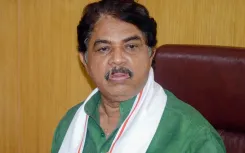Did PM Modi Celebrate Diwali Aboard India's Indigenous Aircraft Carrier?
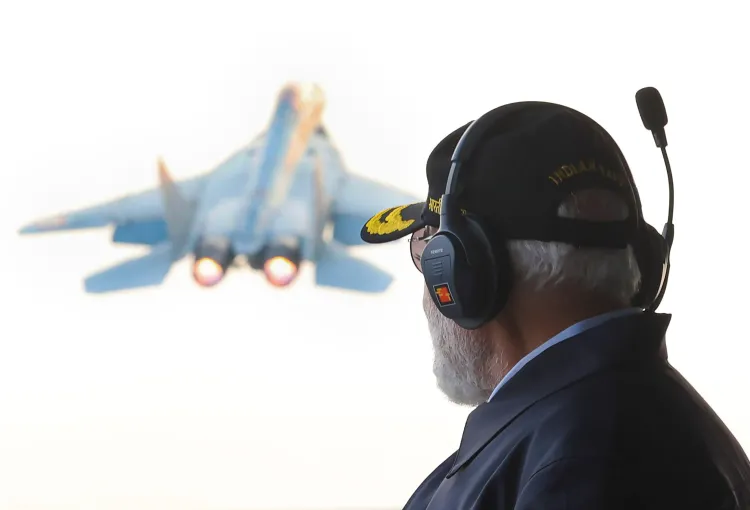
Synopsis
Key Takeaways
- PM Modi celebrated Diwali aboard INS Vikrant, symbolizing India's naval prowess.
- INS Vikrant is a major step towards Aatmanirbhar Bharat.
- The new Naval Ensign represents a break from colonial past.
- The vessel showcases India's capabilities to design and build indigenous aircraft carriers.
- INS Vikrant is equipped with advanced technology for modern naval operations.
New Delhi, Oct 20 (NationPress) Prime Minister Narendra Modi observed this year’s Diwali aboard an Indian Navy vessel, with which he has developed a close connection over the past three years. He commissioned the nation's first indigenous aircraft carrier INS Vikrant at Cochin Shipyard Limited on September 2, 2022.
This event symbolizes the nation's increasing capabilities in indigenous manufacturing and marks a significant achievement on the journey towards ‘Aatmanirbhar Bharat’.
Interestingly, the Prime Minister also introduced the new Naval Ensign (Nishaan) during the same event, marking a departure from colonial history.
He dedicated the new ensign to Chhatrapati Shivaji.
“I recall my remarks when INS Vikrant was handed over to the nation, stating that Vikrant is vast, immense, and magnificent,” he reflected on Monday, October 20. This was a nod to his 2022 address where he articulated: “Vikrant is huge, massive, and exceptional. Vikrant stands apart; it is also unique. Vikrant transcends being just a warship; it is a testament to India's dedication, talent, and influence in the 21st century.”
Reiterating his sentiments, he reminded us on Monday: “The day India embraced the Swadeshi INS Vikrant, our Indian Navy shed a significant symbol of colonial rule.”
Regarding the Ensign, he added: “Inspired by Chhatrapati Shivaji Maharaj, our Navy has adopted a new flag.”
The commissioning of INS Vikrant was a proud moment, placing India among a select few nations with the capability to design and manufacture an indigenous aircraft carrier.
The vessel was designed by the Indian Navy's in-house Warship Design Bureau (WDB) and constructed by Cochin Shipyard Limited, a Public Sector Shipyard under the Ministry of Ports, Shipping, and Waterways.
INS Vikrant is equipped with advanced automation features and is the largest ship ever built in India's maritime history.
It measures 262.5 m in length and 61.6 m in width, reaching a maximum speed of 28 knots, with approximately 2,200 compartments, tailored for a crew of around 1,600 personnel.
The ship can operate 30 aircraft, including MiG-29K fighter jets, Kamov-31, MH-60R multi-role helicopters, as well as indigenously produced Advanced Light Helicopters (ALH) and Light Combat Aircraft (LCA) (Navy).
Utilizing a novel aircraft-operation mode known as Short Take Off But Arrested Recovery (STOBAR), INS Vikrant is outfitted with a ski-jump for launching aircraft and a set of ‘arrester wires’ for their recovery onboard.
During trials, MiG-29 fighters successfully took off and landed on the short runway both during the day and at night, showcasing India's air power.
“I witnessed an awe-inspiring Air Power Demo on INS Vikrant, demonstrating precision and expertise,” the Prime Minister shared on social media X, adding, “The take-off and landing of MiG-29 fighters on a short runway, both in daylight and the darkness of night, was a breathtaking display of skill, discipline, and technological excellence.”
The Chetak, adorned with the national flag and the naval ensign, accompanied by multi-role MH 60 ‘Romeo’ and versatile Kamov 31 helicopters, joined fixed-wing aircraft like the Dornier and P8I, along with fighter jets like the MiG-29K in an impressive flypast.
Also showcased was the naval strength of the western fleet on the seas, featuring warships including aircraft carriers INS Vikrant and INS Vikramaditya, destroyers INS Surat, INS Mormugao, INS Chennai, INS Imphal, INS Kolkata, frigates INS Tushil, INS Tabar, INS Teg, and INS Betwa, along with tankers INS Deepak and INS Aditya, participating in this exercise.

